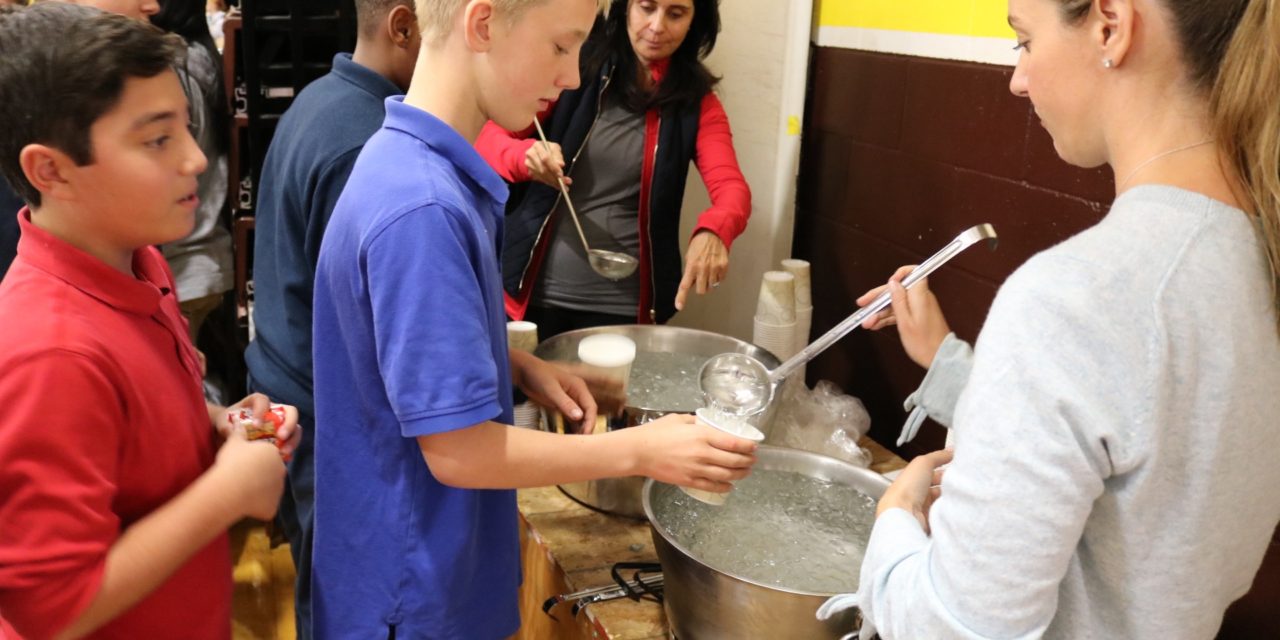Parker’s Middle School students are learning important lessons about food insecurity and how inequality affects a person’s access to food and other vital resources. These lessons were illustrated in a Hunger Banquet held Thursday, Nov. 30.
The Hunger Banquet simulates the inequalities faced by millions of people here in the United States and around the globe and demonstrates how those inequalities — including poverty, illiteracy, war, and the inability of families to buy or grow food — lead to hunger. The simulation was just one component of the Middle School’s year-long community and global awareness theme: hunger.
Students gathered in the field house Thursday to experience for just one hour what most Parker students are privileged enough not to experience in their daily lives: a lack of access to food and water, and the disparities that exist between income groups and the sexes.
As students arrived, they were randomly broken into upper income, middle income, and lower income groups. The majority of students were in the lower income group with only a small percentage assigned to the upper income group, reflecting the distribution of wealth in the United States.
Just like the divide that exists between groups here in the U.S. and abroad, so did the divide exist between students at the Hunger Banquet. The upper and middle income groups were seated at tables separated from the lower income group. Students in the upper income group were served nutritious, filling meals as they sat at their lush tables. Students in the middle income group ate granola bars, but had to wait in line to receive them. Imitating the disparities that exist between the sexes, boys in this group were served first while girls had to wait for their turn. No one in the lower income group was given a seat at the tables and students received only a small ration of crackers if anything at all.
The Hunger Banquet is meant to visualize for students the very real inequalities that separate and suppress communities in this country and around the world. When students walk away from the Hunger Banquet, teachers hope they will be more informed about the issues of food insecurity and that hunger is rooted in a lack of access to vital resources.
Students also take with them the knowledge that hunger affects people in countries rich and poor, and that resources like land and water are becoming more scarce, making it harder for farmers to feed their families. Add to that the global shifts in weather which make it harder for communities to sow and harvest crops.
Head of Middle School Dan Lang said the simulation is a tool to help students “better understand the way income and resources are distributed in the world and to have a better awareness of where they fall within that context. “We want our students to understand that their place in this world is unique,” he said.
The idea of the Hunger Banquet was developed by Oxfam to create awareness of hunger and to highlight issues of injustice. According to the U.S. Department of Agriculture, more than 40 million Americans are food insecure, meaning they are often forced to skip meals, eat less at meals, buy cheap and non-nutritious food, or feed their children and not themselves. About 13 million of those Americans are children. According to United Nations statistics, one in every nine people in the world are hungry, the majority of whom are women or girls.





